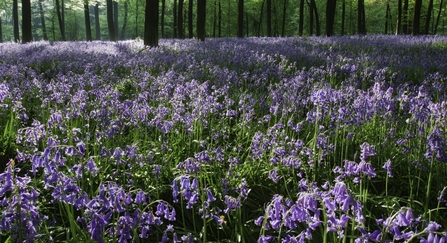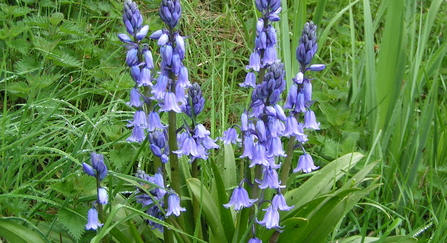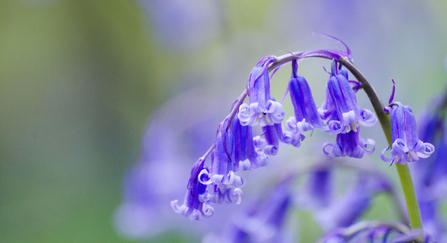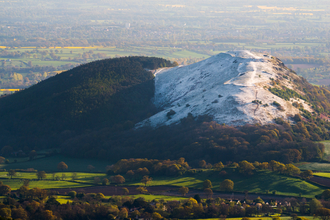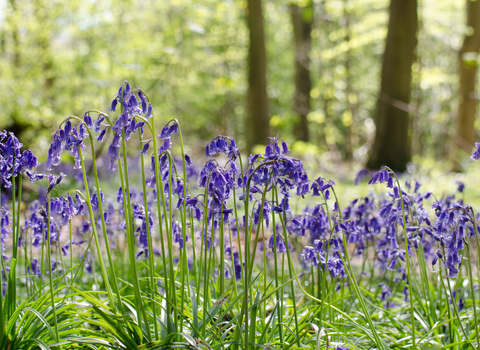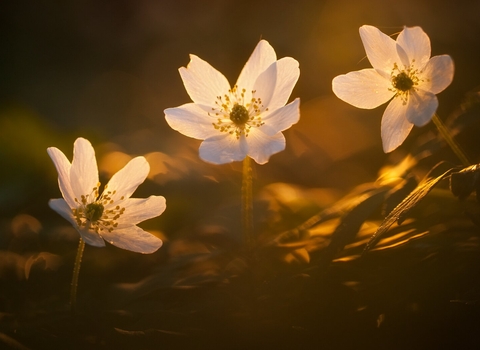The blue haze of bluebells almost floats, delicately scented, in the dappled light. Over half of the world’s bluebells are found in the UK, and they were voted the nation’s favourite wildflower in a Plantlife survey in 2015.
The bluebell has many local names – a sure sign of its cultural significance. In different parts of the country it has been know as wood bell, cuckoo’s boots, lady’s nightcap, witches’ thimbles, cra’s taes (crows’ toes) and, more obscurely, Granfer Griggles.
The Latin name, Hyacinthoides non-scripta, replaced the more poetic Endymion non-scriptus in 1991, but both refer to those beautiful youths beloved in Greek mythology. In the Language of Flowers, bluebells symbolise everlasting love.


